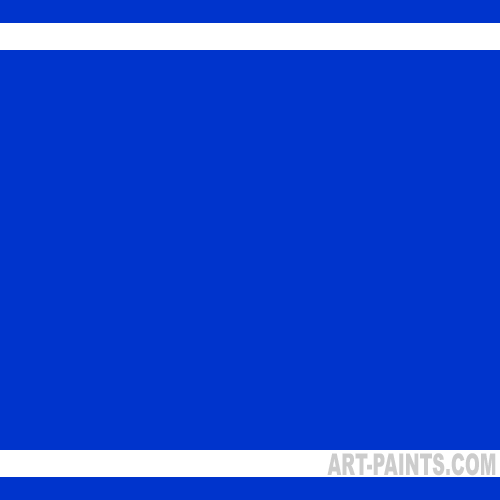

Many less-than-permanent pigments do better when highly concentrated. It’s clearly not the most durable pigment out there, but I guess in most applications it should last quite a while.

Prussian blue does show problems under particularly rigorous conditions and long-term light exposure, as the results of one test posted in the Oil Painting forum show, but overall I think it has to be pretty good to have earned an ASTM I. Do you use watercolors? Oils? Other? My tube of Da Vinci Prussian Blue oil paint has an ASTM lightfastness category of I, Excellent.

I like Prussian blue for landscapes, although I could live with an approximate replacement made from phtalo + black. Have any of you noticed any problems with Prussian blue? Do any of you use the color and are happy with it? In both cases, how do you use it: Pure/mixed, thick/thin etc? Given all this information I wonder if I can use up my present supply of Prussian blue or If I’d better just throw it away. The article also has an experimental chart with swatches of various historical and modern Prussian blues, which show scary levels of fading – I am probably not allowed to attach the chart due to copyright. It says: “The lightfastness of a typical modern Prussian blue pigment has been described as Excellent when the proportion of blue pigment is high (90% Prussian blue, 10% titanium white), decreasing as the proportion of white is increased to give a very poor durability at 1% blue, 99% white.” (That is about the only sentence that I could understand in the article :lol:, which gets VERY technical). Interestingly I just came across an article in the National Gallery Technical Bulletin 25 discussing the properties of Prussian blue. What about you: do you use Prussian blue or do you find it too risky? However I know some painters who like to use it, and I have never heard complaints from any painter who used it and has noticed fading or other problems. This seems to be generally agreed and well documented. Keep scrolling to see 20 unique and beautiful watercolor tattoos.Prussian blue seems to be a commonly used color although I find many sources saying that it is unstable. Some, though, are unique in how they use the watercolor effect to enhance a design. Due to it being based on a watercolor painting, a majority of watercolor tattoos have no outline or, if they do, the colors tend to extend outside of the lines to give off a dripping and drying water effect. Of course, just as every tattoo is personalized to the person receiving it, there’s really no “correct” design for a watercolor tattoo.

The only difference is that an artist must learn a number of techniques-including blurs, bleeds, fades, and runs-to achieve a watercolor look, which is why it’s important to find an experienced and trained artist. However, watercolor tattoos are actually created in the same way and don’t require any different set-up. This effect is intended to mimic the characteristics of a classic watercolor painting, which is where the style gets its name.īecause the style of watercolor tattoos is more delicate and fluid than “traditional” tattoos, it’s easy to think that they’re created with different equipment. A watercolor tattoo is a bright, vivid marking made up of a number of subtle color gradients and techniques that create a more gradual color fade-out.


 0 kommentar(er)
0 kommentar(er)
